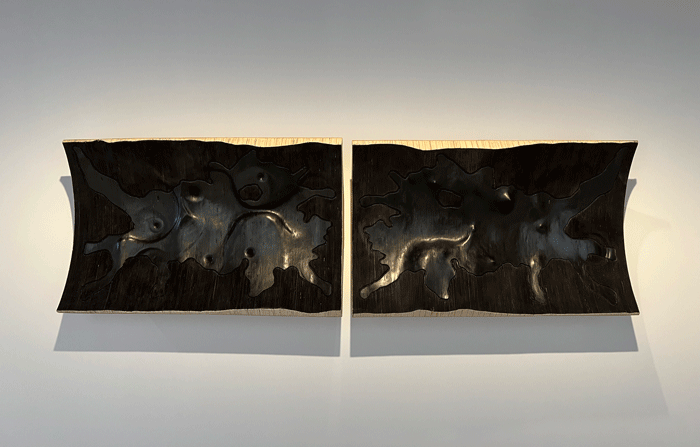Temporary exhibition
Disturbing glances. Rorschach, pareidolia and alchemy.
In 1921, the Swiss psychiatrist and psychoanalyst Hermann Rorschach (1884 – 1922), the son of a painter, published his well-known test (actually a projective method), consisting of a set of 10 inkblot pictures, characterised by their ambiguous nature and bilateral symmetry. The interpretation of these automatic paintings, when shown to patients, made it possible to establish hypotheses about their psychic functioning.
This interplay between the gaze and its psychoanalytic evaluation is generally related to what is known as pareidolia, or the tendency to perceive recognisable forms where in reality there are none. It is a question that is linked to precedents in the creative field, as Leonardo had already suggested when he found figures in the dampness of a wall. But also with later proposals such as the experiments related to surrealist automatism, as in the case of the decalcomanies of Óscar Domínguez, suggestive of a magnificent universe that transited between the abyssal and the dark grottoes of the lava landscapes. Worlds that are not difficult to guess either in some proposals linked to abstraction in the Canary Islands from the sixties onwards, but which, from different points of view, could equally move towards the cosmic or the deformity of the visceral.
101 years after its publication, and in spite of its scientific questionability, even today the Rorschach test continues to be used in different fields as a tool for assessing personality. In any case, the interesting thing about it is that, ultimately, what it seeks is not the detection of interpretative patterns of these spots and, therefore, a regularity or supposed “normality” of the interpreter, but, on the contrary, the disturbances that seem to move away from those reading values a priori considered logical.
In a similar sense, when faced with the work of art, it is precisely the disturbing gazes that manage to activate the necessary alchemical process of transmutation of the stain, the matter or the fluid into other realities, always different and unsuspected, and to break the predictability of perfect symmetry and the exhausting inertia of the norm and the normal, impossible after all in any possible world. And yet, the paranoid impulse that leads us to try to discover a glimpse of truth hidden among the formless is almost inevitable.
Eliseo G Izquierdo

